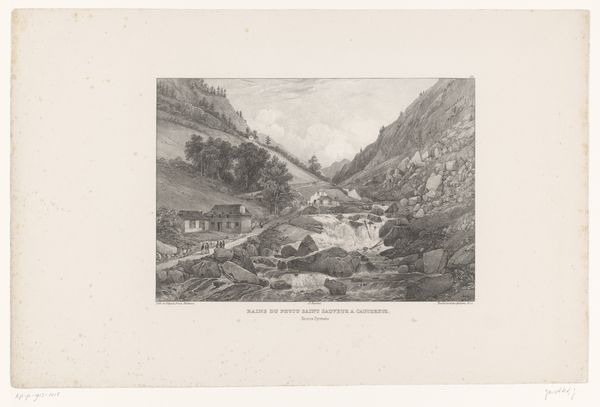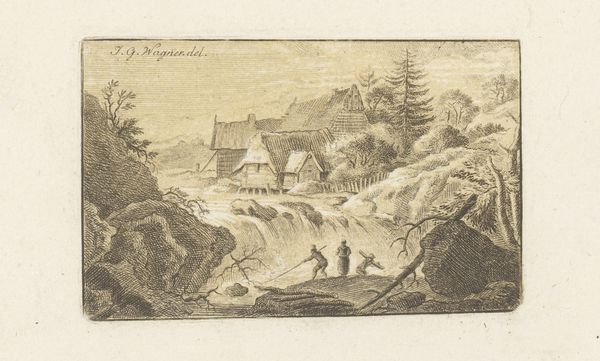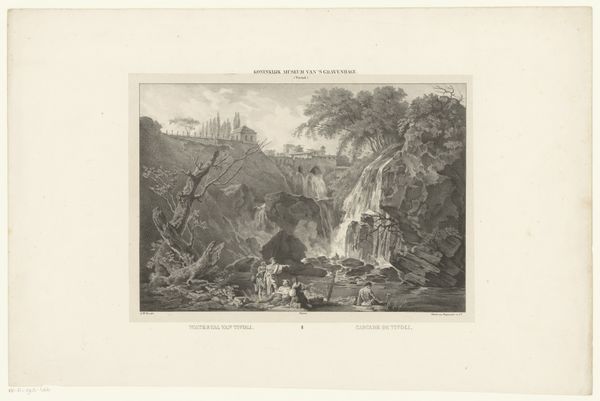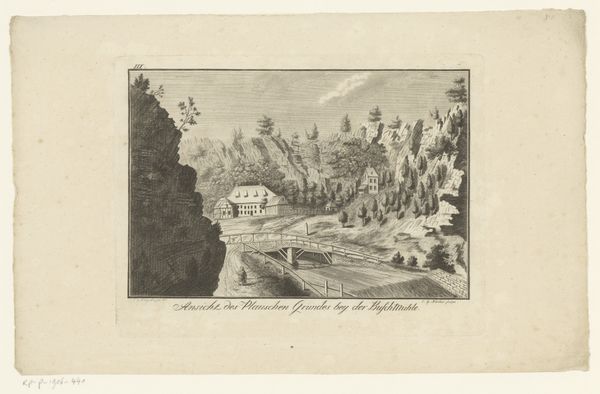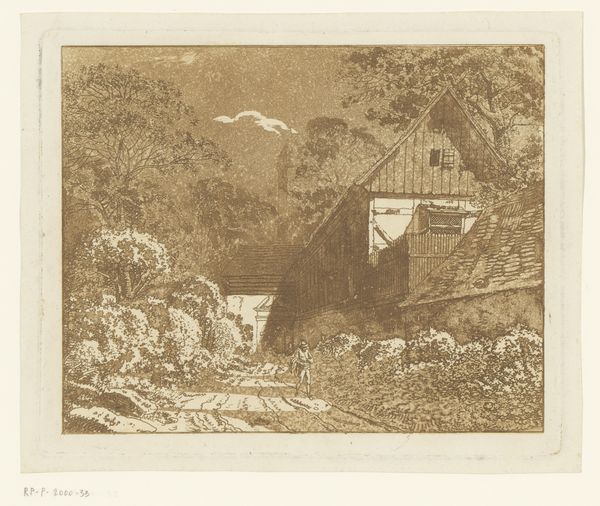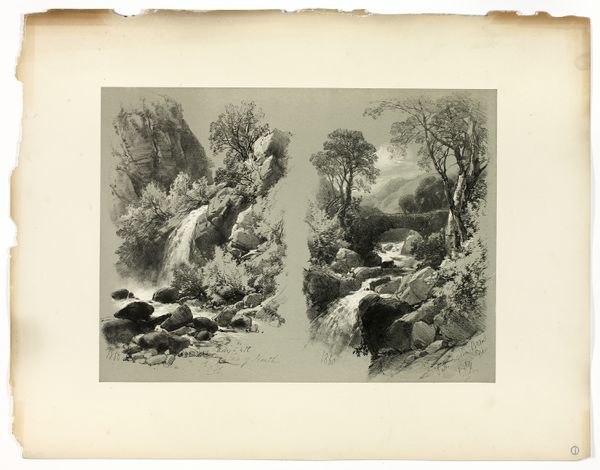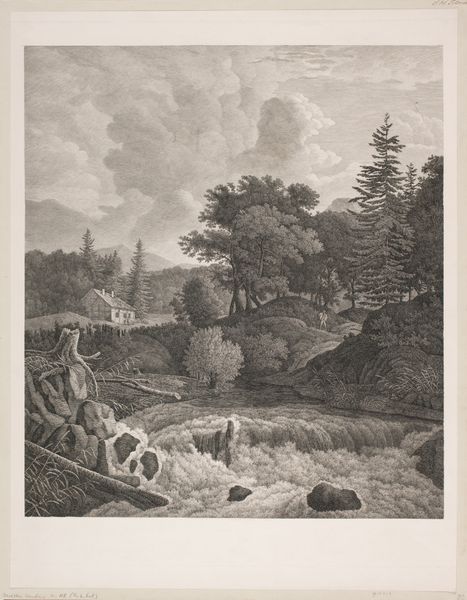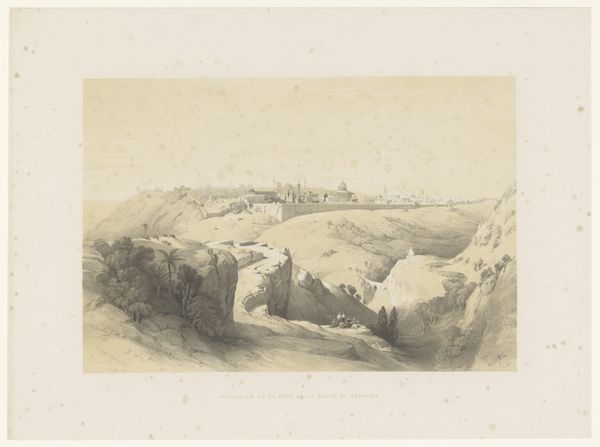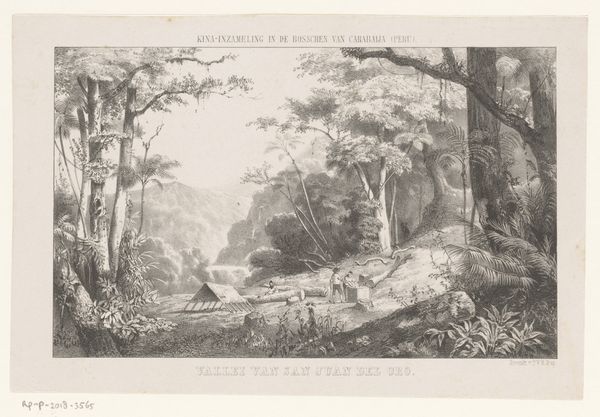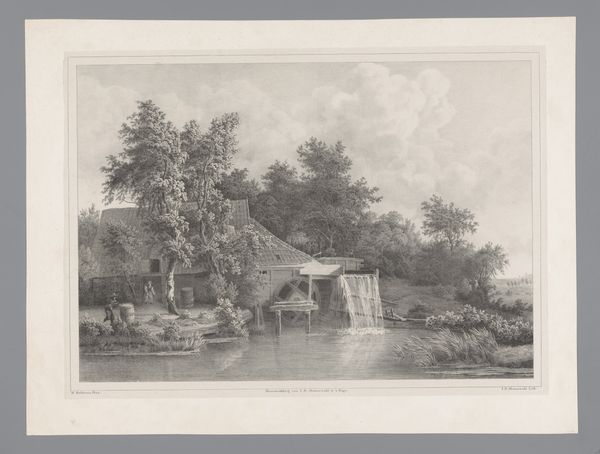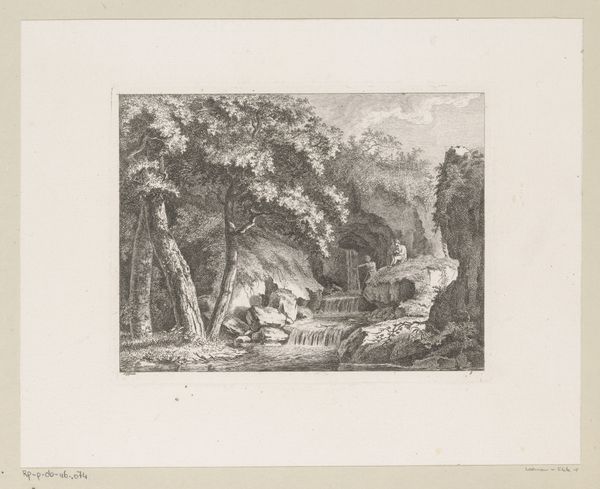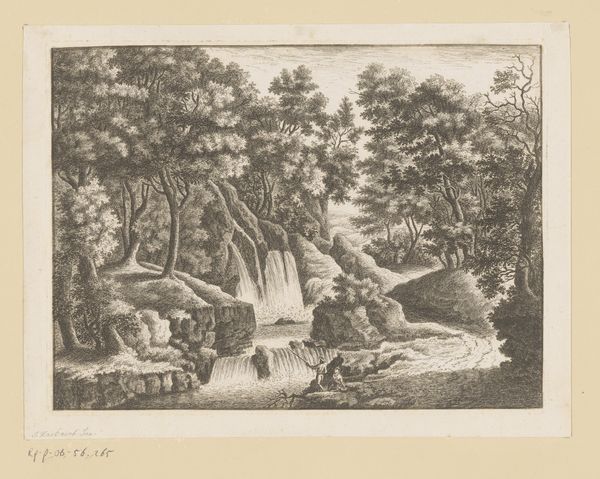
Dimensions: height 134 mm, width 184 mm
Copyright: Rijks Museum: Open Domain
Curator: Here we have Célestin Nanteuil's "Bron bij Divonne", an engraving from 1856. Editor: It feels melancholic, almost… romantic in a mournful sense. The rapid water contrasts with the static figures dotted about, and it all feels very isolated despite those figures being present. Curator: Indeed. Nanteuil was working within a specific Romantic vision, one profoundly shaped by its socio-political era. Consider the rise of industrialization during that period. Landscapes like this one offered an idealized vision of nature, untouched by modern progress, yet inherently reshaped as a commodity through tourism. Editor: The figures really speak to this tension. Are they viewers of a natural spectacle, or are they complicit in its staging, their presence completing the idyllic scene? Who has access to these places, and how does that inform their reading of the landscape? Curator: Excellent questions! Think, too, of the burgeoning art market. Prints like these made picturesque scenes accessible to a wider public. One could possess a fragment of untamed nature within their own home, filtered through the artist's, and the publisher's, vision. Editor: So, it's a democratizing impulse mixed with a romanticizing and inevitably commercial gaze? I find myself wondering about the experience of those who couldn’t afford such art or access such scenes physically. Were they implicated in a visual economy that constantly rendered them absent? Curator: That’s exactly what I mean. The image invites reflection on these complexities. We can celebrate the Romantic’s sensitivity towards nature, whilst deconstructing who benefited, both materially and ideologically, from the way the natural world was presented at that time. Editor: Thinking about this piece helps to me realize that there isn’t a fixed universal meaning here. I believe, through an intersectional reading, this piece encourages us to continually re-evaluate what, whom, and how the narrative excludes or represents. Curator: It is, in effect, a document shaped by specific societal forces that we can still examine to create new perspectives today.
Comments
No comments
Be the first to comment and join the conversation on the ultimate creative platform.
